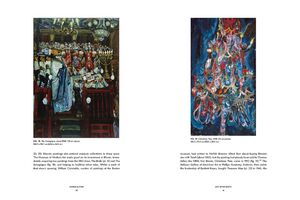Kontakt
art book cologne GmbH & Co. KG
Deutzer Freiheit 107
50679 Köln
Germany
Öffnungszeiten Büro und Showroom:
Montag-Freitag von 8-17 Uhr
info@artbookcologne.de
Tel.: +49 221 800 80 80
Fax: +49 221 800 80 82
Über uns
Seit 1997 sind wir Großhandel für hochwertige Publikationen der Gebiete Kunst, Kunsttheorie, Kunstgewerbe, Architektur, Design, Fotografie und illustrierte Kulturgeschichte. Unser kleines Team setzt sich aus den Fachgebieten Kunst, Kultur, Musik, Buchhandel und Medien zusammen und hat bei aller Vielfalt einen gemeinsamen Nenner: Die Begeisterung für schöne Kunstbücher.
Der Schwerpunkt unserer Tätigkeit liegt in der Übernahme von Restauflagen von Verlagen, Museen und Kunstinstitutionen. Wir bieten diese Titel dem Sortiments- und Versandbuchhandel, den Museumsshops und dem Kunsthandel an.
Hyman Bloom – Matters of Life and Death
| Verlag | MFA Publications |
| Jahr | 2019 |
| Einbandart | Fester Einband |
| Sprache | Englisch |
| ISBN | 978-0-87846-861-4 |
| Seiten | 112 |
| Gewicht | 840 g |
| Mehr | |
| Autor(en) | Erica E. Hirshler |
| Beiträge von | Naomi Slipp |
| Artikel ID | art-64116 |
Themes of mortality and spirituality in the long-neglected art of a midcentury American pioneer: Hyman Bloom was a contemporary of Willem de Kooning, Jackson Pollock and Arshile Gorky. This new study focuses on Bloom’s paintings and drawings of human corpses, anatomical studies and archeological excavations from the 1940s and 1950s. He often returned to these subjects throughout his career, using thickly applied paint in rich colors as he aspired to present both the physical and the spiritual on canvas.
Insightful curatorial essays accompanied by beautiful full-color reproductions explore this difficult but compelling work, considering themes such as the life, death and rebirth of Bloom’s artistic reputation; the growing divide between figuration and abstraction at this defining moment of American art; earlier artistic traditions of representing mortality; the relationship between these works and Bloom’s Judaism, interest in Eastern religions, and belief in reincarnation; and the artist’s desire to find beauty and meaning within death and decay. In these drawings and paintings, as Bloom himself asserted, “the paradox of the harrowing and the beautiful [can] be brought into unity.”











